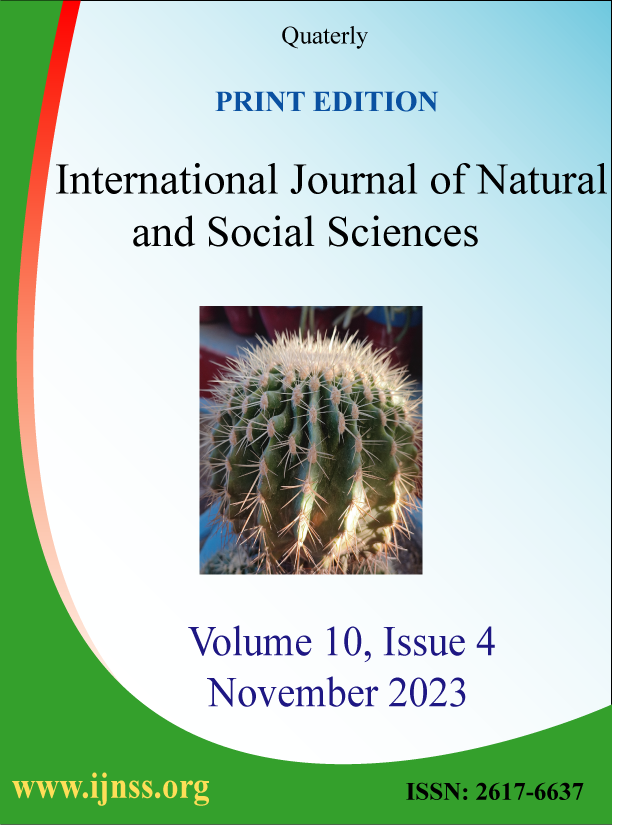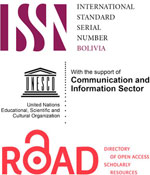Effect of seed borne fungi on germinating wheat seed and their treatment with chemicals
Volume 2, Issue 1, February 2015, Pages 28–32
Md.Shahidul Islam1
 , Md. Nazirul Islam Sarker2, Md. Arshad Ali3
, Md. Nazirul Islam Sarker2, Md. Arshad Ali3
1Department of Department of Plant Pathology, Bangladesh Agricultural University, Mymensingh-2202
2Department of Department of Agricultural Extension and Education, Bangladesh Agricultural University, Mymensingh-2202
3Department of Department of Entomology, Bangladesh Agricultural University, Mymensingh-2202
| ABSTRACT | Get Full Text PDF |
Wheat is being attacked by several fungal pathogens, many of them are seed-borne. These fungi were detected by the methods as recommended by the ISTA. The experiment was conducted at the Seed Pathology Centre, Bangladesh Agricultural University, Mymensingh during January, 2006 to February, 2007 to record and identify the seed borne fungi associated with wheat seeds as well as their control with some chemicals. The seeds were collected from ten villages of each of two different locations of Dinajpur district (Dinajpur Sadar upazila and Birgonj upazila). Different seed borne fungi such as Bipolaris sorokiniana, Ahernaria tenuis, Curvularia lunata, Fusurium spp, Aspergillus niger and A. flavus were predominant with the wheat seeds of two locations of Dinajpur district. Three chemical fungicides such as Vitavax 200, Bavistin and Captan were used to evaluate their effect on seed-borne fungi of wheat seeds. Among the used chemicals Vitavax 200 showed potential effect compared to others. However, if considerable effect of Vitavax 200 fungicide to the environment and it performance in field trail were observed Vitavax 200 could be used to control wheat seed born fungi.
Key words: Triticum aestivum, seed-borne fungi, Vitavax 200, Bavistin, Captan.
![]() Corresponding author. Tel.: +8801716872870
Corresponding author. Tel.: +8801716872870
E-mail address: shahid.sbl2008@gmail.com (MS Islam)
How to cite this article: MS Islam, MNI Sarker and MA Ali (2015). Effect of seed borne fungi on germinating wheat seed and their treatment with chemicals. International Journal of Natural and Social Sciences, 2(1): 28-32.
INTRODUCTION
Wheat (Triticum aestivum L.), the world’s most important cereal that is used as staple food by two third of the world population (Majumder, 1991). It is considered as the second most staple food crop next to rice in Bangladesh. Besides human nutrition, wheat is also used as animal feed. According to BBS, 2006 total wheat cropped area 1380000 acre, production 976000 mt and yield 0.71 mt/acre. Wheat plants at all stages are subjected to numerous injuries and stresses, which interfere with their normal functioning and development. Seeds are regarded as highly effective means for transferring pathogens over the years. Seed-borne diseases have been found to affect growth and development of crop plants. Several seed-borne pathogens are associated with wheat which are responsible for deterioration of seed quality during storage. The yield loss in wheat due to different diseases have been reported to be 20% in var. Sonalika, whereas 14% and 8% in Akbar and Kanchan respectively (Razzaque and Hossain, 1991). In farmers field the yield loss was estimated to be 14.97% (Alam et al. 1995). In case of severe attack it may result even 100% yield loss (Hossain and Azad, 1994). Almost all methods are aimed for protecting plant becoming diseased rather than curing them after they become diseased and seed treatment is one of the methods. The fungi which are exclusively seed-borne in nature can be controlled only through the treatments of seeds. Seeds are treated with chemicals to prevent their decay after planting by controlling pathogens carried on them, present inside the seeds or existing in the soil where they will be planted. Different chemicals and botanicals control measures are used for seed borne fungi of wheat. So far an appreciable amount of work has been done on the control of seed-borne pathogens of wheat by fungicidal seed treatment (Singh et al., 1995). Seeds are treated with fungicides before germination. In view of the facts, the present study was undertaken to detect seed-borne fungi on wheat seeds and control of seed-borne fungi by chemicals.
MATERIALS AND METHODS
Sample
The experiment was carried out to see the effect of fungicides to control of seed-borne fungi of wheat. A total of 40 seed samples (Farmer’s seed) of two wheat (Triticumaestivum L.) varieties (Protiva and Sourav) were collected from two upazila of Dinajpur district (ten villages were included in each upazila). One sample was taken from each village and the size of each sample was 200 g (approx.). The seeds were then kept in paper bags and stored in the refrigerator at 5-7°C till these were used for the subsequent studies.
Seed health test
All the seed samples were assayed for the presence of fungal pathogens by the Standard Blotter Method (ISTA, 2001) following the international rules for Seed Testing Association. The seed borne fungal pathogen associated with seeds was observed by stereo binocular microscope following the key of Mathur and Kongsdal (1994).
Seed treatment
In this method, two hundred seeds were randomly taken from each sample. The seeds were plated on water soaked three layered Whatman No. 1 filter paper in plastic petridish. In each petridish, 25 seeds were plated at equal distance. All these petridishes were incubated at 20±2°C under 12 hours alternate cycle of Near Ultra Violet (NUV) light and darkness. After 7 days of incubation, petridishes containing incubated seeds were observed under stereomicroscope. Where identification was difficult or doubtful under the stereomicroscope, temporary slide was prepared and examined under the compound microscope and identified with the help of keys (Chidambaram et al., 1973). Numbers of germinated seeds were recorded along with the seed-borne fungi after seven days of incubation. The results were expressed in percentage. Three fungicides namely, Vitavax 200, Bavistin and Captan were tested at their recommended dose (0.25%) against the seed-borne fungal pathogens. Requisite amount of each fungicide and seeds from each sample were taken in a 250 ml Erlenmeyer flask and were shaken mechanically for 10 minutes for proper coating of fungicides. After 24 hours, the efficacy of the 3 test fungicide, were evaluated by comparing with an untreated control using the Standard Blotter Method (ISTA, 1976). The Fungi yielded and germination of seeds were recorded. The experiments were conducted following the Completely Randomized Design (CRD). Analysis of variance was done and the mean differences in the efficacy of the treatments were judged by Duncan’s Multiple Range Test (DMRT). Values were transformed by means of the arcsin transformation to normalize the variation. The analyses of variance were performed on the transformed values for germination percentage.
RESULTS AND DISCUSSION
Identification of seed-borne fungi
After 7 days of incubation of seeds on wet blotting paper the yielded fungi were detected and then identified. The fungi yielded were Bipolaris sorokiniana, Alternaria tenuis, Curvularia lunata, Fusarium spp. Aspergillus spp., Penicillium spp. and Rhizopus spp. Among them only the major ones were taken into account in this experiment.
Prevalence of fungi in seeds
The prevalence of fungi in the collected seed samples was recorded in table 1. The prevalence of Bipolaris sorokiniana, Alternaria tenuis, Curvularia lunata, Fusarium spp, Aspergillus niger and Aspergillus flavus were varied significantly with respect to variety. In Protiva, the prevalence of Fusarium spp was highest (10.42%) followed by Aspergillus flavus (6.13%) whereas Alternaria tenuis (3.39%) was found lowest in prevalence. In Sourav, Fusarium spp (11.38%) was highest in prevalence followed by Bipolaris sorokiniana (6.63%) and lowest prevalence was observed in Aspergillus niger (4.07%). Fusarium spp was found highest in prevalence for both varieties Seed borne fungal infection was in Sourav variety (36.46%) compared to Protiva (33.97%).
Table 1
Prevalence of seed borne fungi of wheat
| Varieties | Prevalence of seed borne fungi (%) | Total seed borne fungi (%) | |||||
| Bipolaris sorokiniana | Alternaria tenuis | Curvularia lunata | Fusariumspp | Aspergillus niger | Aspergillus flavus | ||
| Protiva | 5.33b(13.35) | 3.39b(10.22) | 3.45b(10.70) | 10.42a(18.74) | 5.24a(13.07) | 6.13a(14.18) | 33.97 |
| Sourav | 6.63a(14.85) | 4.85a(12.54) | 4.36a(11.62) | 11.38a(19.53) | 4.07b (11.63) | 5.17a(13.14) | 36.46 |
Column having the same letter (s) are statistically identical and different letter (s) statistically different (P ≤0.01); Figures in parenthesis indicate (Arcsin) transformed values; Four hundred seeds were tested for each sample.
Table 2
Effect of seed treatment on seed borne fungi and germination
| Chemicaltreatments | Germination (%) |
Percent seed borne fungi | Reduction Over control (%) |
|||||
| Bipolaris sorokiniana | Alternaria tenuis |
Curvularia Lunata |
Fusarium spp |
Aspergillus niger |
Aspergillus flavus |
|||
| Control (no treatment) | 76.75b (61.16) |
7.75a (16.15) |
6.25a (14.44) |
5.00a (12.88) |
13.50a (21.53) |
6.25a (14.44) |
6.25a (14.44) |
|
| Vitavax 200 | 80.50a (63.78) |
0.25 d (4.47) |
0.00c (4.05) |
0.00c (4.05) |
0.00c (4.05) |
0.00c (4.05) |
0.00d (4.05) |
99.75 |
| Bavistin | 81.00a (64.14) |
1.75c (7.39) |
2.00b (7.99) |
0.50c (4.90) |
1.75b (7.53) |
2.75b (9.51) |
1.75c (7.53) |
89.50 |
| Captan | 80.50a (63.80) |
3.00b (9.90) |
3.00b (9.90) |
1.75b (7.39) |
2.25b (8.45) |
3.25b (10.04) |
3.75b (11.10) |
83.00 |
Column having the same letter (s) are statistically identical and different letter (s) statistically different (P ≤0.01); Figures in parenthesis indicate (Arcsin) transformed values.
Effects of seed-borne fungi on the germination of seeds
After 7 days of incubation viability of seed samples varied among the varieties. The Provita variety showed 80.77 % germination whereas Sourav variety showed 78.91% indicating no significant different in germination due to effect of fungi. Maximum prevalence of various fungi was recorded in Sourav (36.46%) than Provita variety (33.97%).
Effect of the fungi on germination of seeds
Sourav variety showed 78.35% germination in Sadar upazila and 79.47% in Birgonj upazila whereas Protiva variety showed 81.32% in sadar and 80.35% in Birgonj upazila of Dinazpur district. The lower germination rate was found in Sourav probably due to higher infection with fungi. On the other hand higher germination rate found in Protiva might be due to lower infection rate observed in this study. The study might reflect the effect of seed borne fungi on germination of wheat seed.
Effect of seed treatment on fungi
Three fungicides namely, Vitavax 200, Bavistin and Captan were used in this experiment. The results are presented in Table 1. So far germination of the seed is concerned, it was observed that the treated seeds showed significantly higher rate of germination than untreated seeds (Table 2).
The efficacy of fungicides in controlling seed-borne fungal infection was analyzed and presented in table 2. Effect of treatments in controlling seed-borne fungi was statistically significant. The highest infection of Bipolaris sorokiniana was recorded in control and it was 7.75%. Bipolaris sorokiniana was found to be 0.25% when seeds were treated with vitavax 200. The treatment Bavistin was also very effective when only 1.75% infection was recorded. Next chemical captan treated seed showed 3.00% seed infection. Alternaria tenuis infection was highest in control complete elimination of this fungus was possible through Vitavax 200. After treating Bavistin and captan (2.00%) and (3.00%) infection was found (Table 2), they were statistically similar. The highest infection of Curvularia lunata was recorded in control and it was (5.00%). Most effective control of this fungus was obtained with vitavax 200 followed by Bavistin and captan (Table 2). The highest infection of Fusarium spp was recorded in control and it was (13.50%) most effective control of this fungus was obtained with vitavax 200 (0.00%) which was statistically significant. In case of Bavistin and Captan (1.75%) and (2.25%) infection was found respectively. In case of Aspergillus niger highest percent of seed-borne infection was found in control (6.25%). Best control was given by the treatment Vitavax 200 (0.00%) followed by Bavistin (2.75%) and Captan (3.25%) which were statistically similar (Table 2). On the other hand Aspergillus flavus was most prevalent in control and the infection was recorded as (6.25%) complete elimination of the fungus by Vitavax 200, Bavistin and Captan reduce efficacy of the pathogen (1.75%) and (3.75%) respectively which were statistically significant (Table 2). In the present findings, Vitavax 200,Bavistin and Captan to be effective in controlling, Bipolaris sorokiniana Alternaria tenuis, Curvularia lunata, Fusarium spp and Aspergillus niger. In respect to the efficacy, among the tested fungicides Vitavax 200 was first in controlling the major seed-borne fungi of wheat which corroborate with the findings of Rahman (1998) and Sultana (2003). Bavistin appeared as effective to control the seed-borne fungi of wheat. This result is in agreement with the results of Chandi Ram and Maheshwari (1992) found Bavistin as an effective fungicide against Fusarium spp associated with gourd seed. The present observation showed that Captan as effective as Bavistin in controlling the seed-borne fungi of wheat which is more or less in agreement with the findings of Mukerjee and Basak (1972). The efficacy of this fungicide was reported on cotton seed Kale et al., (1992). Therefore, it may be concluded that wheat seeds produced by the farmers in different parts of Bangladesh carry important seed-borne fungi and treating of seeds with Vitavax 200 might be the best in controlling fungi of wheat seeds. Thus, farmers may be advised to use Vitavax 200 to control wheat seed-borne fungi.
The study revealed that wheat seeds produced by the farmers in different parts of Bangladesh carry important seed-borne fungi and treating of seeds with Vitavax 200 might be the best in controlling fungi of wheat seeds. Thus, farmers may be advised to use Vitavax 200 as seed treatment to control wheat seed-borne fungi. However, more comprehensive research including field trials needed to be carried out in this discipline before recommendation.
REFERENCES
Alam KB, Malakar PK, Shaheed MA, Ahmed MU, Ahmed F and Haque MS (1995). Yield loss assessment of wheat due to Bipolaris leaf blight in Bangladesh. Bangladesh. Journal of Plant Pathology, 11 (1&2): 35-38.
BBS (Monthly Statistical Bulletin Bangladesh) June 2006, Ministry of Planning, Govt. of Peoples Republic of Bangladesh, Dhaka. p. 54.
Chandi Ram and Maheshvyari SK (1992). Seed-borne fungi of sponge gourd and their control. Agricultural Science Digest, 12 (2): 62-64.
Chidambarain VS, Mathur SB and Neergard P (1973). Identification of seed-borne Drechslera sp. Friesia, 10: 165-207.
Hossain I and Azad AK (1994). Bipotaris sorokiniana its reaction and effect on the yield of wheat Progressive Agriculture, 5(2): 63-69.
ISTA (International Seed Testing Association) (2001). International Rules for Seed Testing. Rules Amendments. Seed Science and Technology, 29 (2): 1-127.
Kale PS, Holey NR and Korde SR (1992). Fungicides for controlling seed borne infection in Cotton Seeds. Seed research, 20(1):60.
Majumder M (1991). Crops of Eastern Indian. West Bengal stage Book Board. Arg. Manson (8th floor). 6/A, Raja Subodh Mallik square, Calcutta. p. 85.
Mathur SB and Kongsdal O (1994). Seed mycology. Description and Illustrations of fungi. DGISP for Developing, Denmark, 1st edn
Mukerjee N and Basak NIN (1972). Evaluation of non-mercurial seed dressing fungicides in jute. Indian Journal of Agricultural Science, 42: 407-409.
Rahman MA (1998). Study on the effect of seed treatments and Foliar spray in controlling Bipolaris leaf blight of wheat. M.S. Thesis. Department of Plant Pathology, BAU, Mymensingh. pp 40-60.
Razzaque MA and Hossain ABS (1991). The wheat development program in Bangladesh “Wheat for the non traditional worm areas”, Procedding of International Conferece, held in July 29 to Aug.3, 1990 in Fozdolguacu Brazil CIMMYT. pp. 44-54.
Singh RV, Sinoh AK, Singh D, Singh SP and Choudhary VP (1995). Management of foliar blight of wheat through chemicals. Indian Journal of Mycology and P1ant Pathology, 25: (1 & 2): 113.
Sultana N (2003). Effect or Bion. Amistar and Vitavax 200 on some fungal disease of peanut. MS thesis. Department of Plant Pathology. BAU, Mymensingh, Bangladesh.pp.30-50.






